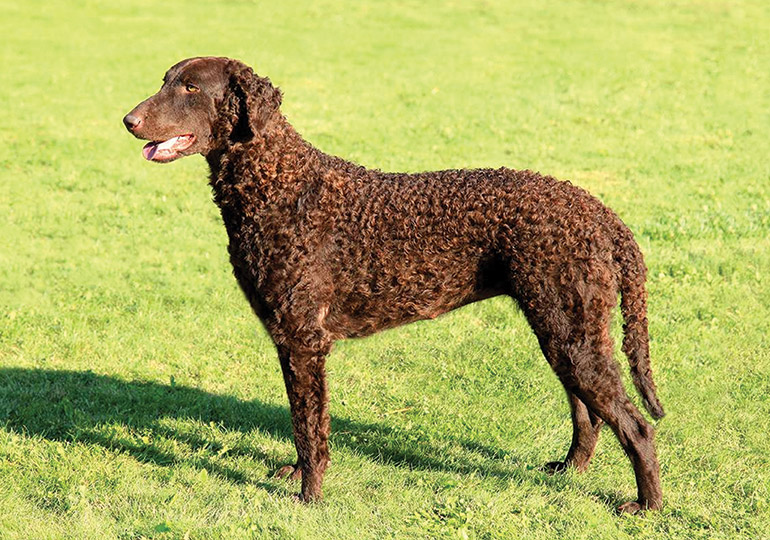
GROUP 3 - GUNDOGS
The first recorded information on Curly Coated Retrievers in Australia goes back to the early 1880s, however the breed has also been particularly successful overseas. Titled champions have been recorded in Germany, Holland, Sweden, Finland, USA and New Zealand. The Curly Coated Retriever Association of Victoria was formed in 1977 and the Curly Coated Retriever Social Club was formed in NSW in 1983. An affiliated club followed in 1991.
The one genetically distinctive characteristic of the Curly Coated Retriever is its curly coat. General opinion is that the St John’s Newfoundland, Irish Water Spaniel, Old English Water Dog and Poodle all lent something to the breed’s origins.
The Curly Coated Retriever is a successful sporting dog, thanks to a combination of pace, endurance and intelligence. With its size and strength, the breed is able to retrieve almost anything. The Curly Coated Retriever excels in water and will show a strong desire to swim from an early age.
The Curly Coated Retriever is slow to mature and may take up to three years to reach full maturity. The breed is kind-hearted, devoted to its owner and family and likes to be praised. It is not prone to barking, but is an excellent protector of family and property if required. The breed’s deep bark alone is enough to stop unwanted intruders in their tracks.
The Curly Coated Retriever tends to have a mind of its own; the breed is obedient, but in its own time. This independence is one of the traits that Curly Coated Retriever devotees find attractive as it makes for a dog of great character. It is a gentle companion and adapts well to most other pets, happily sharing its home with cats and other dogs. As with all large dogs, the Curly Coated Retriever needs plenty of exercise to keep it in good condition. The breed can live to 13-14 years of age.
The Curly Coated Retriever does not require much grooming and on no account should a brush be used. The coat’s natural oils have a tendency to build up, so a regular bath is advisable, but no drying is necessary.
A 10-minute session to trim any scraggly bits from the coat, tail and ears, is all that is needed. The coat, made up of water resistant curls, is hypo-allergenic making it a suitable pet for people with allergies.
The Curly Coated Retriever has relatively few health problems. Just like all Retrievers, hip dysplasia can affect the breed. Responsible breeders will carry out hip score studies and eye examinations and should be able to provide a history of scores for a puppy’s lines.
Words: Kerrie Lydon
Image: selectadogbreed
Now you know a little about the Curly Coated Retriever, you may think that this is the dog for you. Before you make a decision, please make contact with the breed club or your State controlling body for purebred dogs. They will be able to give you information about available puppies and also suggest dog shows where you can see the breed and speak to breeders. In this way you will gain a better perspective of the Curly Coated Retriever and its needs, and whether this breed would suit your lifestyle.